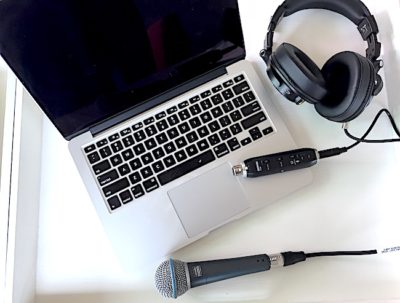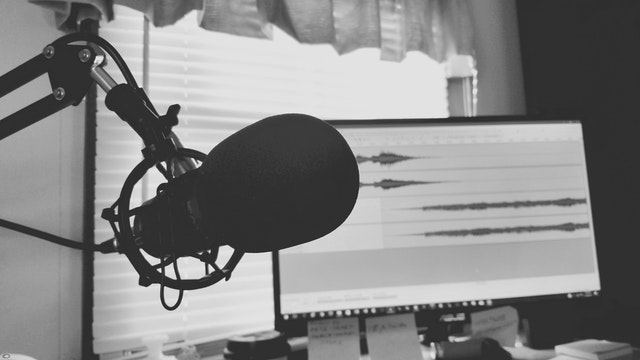 Updated 31 January 2024
Updated 31 January 2024
I’m often asked about my podcast setup. Questions are typically about editing software, hosting, and what microphone I use. Sometimes people just want to know more about getting started.
Since it’s a recurring topic, I put it all here on my website.
So let’s start with my setup, software and hardware.
Disclosure
Some of the links in this post are affiliate links. This means I make a small commission, at no extra charge to you, if you purchase using those links. Thanks for your support!
Hosting
I fortunately chose Libsyn for my hosting service. The choice was fortunate, because I could have chosen any number of other hosting services, any number of which could have caused me some grief and even regret. I’ll talk about all the things I love about Libsyn in a future update.
Recording, Editing & Sound
My preference used to be Skype with the help of Call Recorder for Skype. The pandemic changed that, because everyone started using Zoom for calls. Everyone became familiar with Zoom, which was never the case with Skype. I started out recording audio only, but with the ubiquity of Zoom, I tried video. I’m back to audio only after realizing I didn’t have the bandwidth to do anything meaningful with the video.
In 2020, I decided to start recording music, which lead me to purchase an 8-channel audio interface that would allow me to mic an acoustic drum kit. I also upgraded my digital audio worsktation (DAW) from Garageband to Logic Pro. I previously used to Garageband to edit my podcast, but switched to Logic Pro. Audacity is a good option for Windows users.
I can also recommend Auphonic for final sound treatment, although I now use Logic Pro for final mixing.
Hardware
My hardware setup consists of the following.
- MacBook Pro 13″ 2020
- Shure MV7X XLR Microphone – Prior to purchasing the MV7X, I used a SureBeta 58A (my vocal mic for gigs). It also works great!
- Focusrite Scarlett 18i8 3rd Gen USB Audio Interface
- Apple Wired Earpods (in lieu of headphones)
- TAMA Standard Series Boom Microphone Stand – This stand is a beast. I’ve used it for over 15 years as a gigging drummer
- Pro Co 10′ Excellines Mic Cable XLRF-XLRM
- TACKFORM Tablet Mount for Microphone Stand (optional iPad mount)
My audio interface would be overkill for most podcasters, but Focusrite has a great line of more affordable options available through Sweetwater and Amazon.
More gear recommendations at the end of this article
Episode Transcriptions
I was using a service called Otter.ai for episode transcriptions, but stopped doing transcripts altogether. Otter.ai affordable and relatively easy to use. Transcriptions will cost you additional time and money. This was an experiment for me. I was curious to see if transcripts provided SEO benefits or listener/reader feedback.
Why I Love Podcasting
I love the art of the interview. I also love all the new acquaintances I’ve been able to make. The super bonus of it is that I learn so much from my guests. Plus I get to share it with my listeners and email subscribers, to make your journey a little easier. Win-win. I confess to being a bit of a techie nerd, so there’s that too. Overtime I’ve learned it’s a great source of content for my email subscribers, blogs, social media and more. It’s a time consuming endeavor, but I really do enjoy it. You should too.
More Gear Recommendations
For new podcasters
USB mic option: Samson Q2U USB/XLR Dynamic Microphone
Audio interface option (required w/XLR mics): Scarlett Solo audio interface

